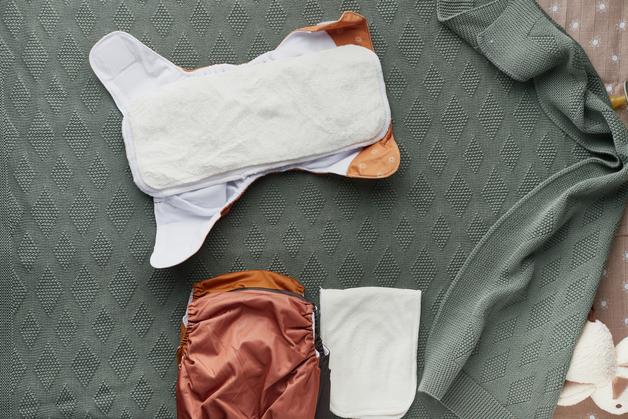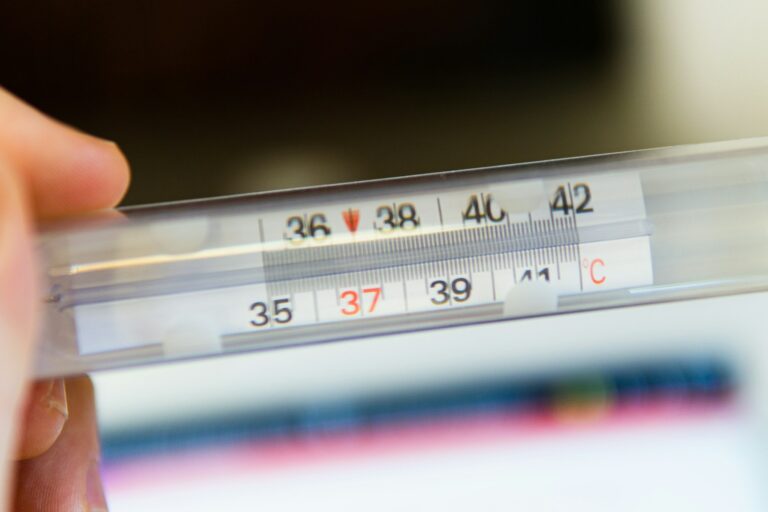Wondering whether a swim diaper is genuinely necessary before your next outing to the pool or beach? Often, families feel a mix of excitement and concern—the idea of taking a young child near water can be tinged with worries about hygiene, embarrassing leaks, group safety, and those ever-present public pool rules. The quest for a solution that balances your child’s comfort with public health standards leads many parents straight to the swim diaper. But what separates a swim diaper from everyday nappies? How should one choose—disposable, reusable, or hybrid? And, perhaps more importantly, how to use it correctly so your little one can splash safely, comfortably, and joyfully? From scientific principles behind waste containment, skin health, and pool hygiene to simple tips for changing and maintenance, every angle comes packed with questions and, thankfully, practical solutions.
Swim diaper: what every parent should know
What is a swim diaper? Key differences from regular diapers
A swim diaper is purpose-built for aquatic environments, engineered with a unique blend of waterproof exteriors and soft, stretchable fabrics. The essence? Freedom of movement paired with hygiene containment. Unlike standard nappies, which swell and weigh down once submerged, a swim diaper resists becoming waterlogged—thanks to its no-swell technology, which is more than a minor convenience: it preserves buoyancy and allows your child to kick, float, or tumble with glee.
Elastic, leak-guard leg cuffs and a 360° stretch waistband minimize the risk of solid waste escaping (a concern not to be underestimated, as faecal contamination in communal water can propagate bacteria and viruses like E. coli or norovirus—risk factors especially for children with their still-maturing immune systems). Yet, it’s important to know: swim diapers don’t absorb urine. They are intentionally non-absorbent, as any absorbency would quickly be overwhelmed during water play, thus precluding the very mobility and comfort these diapers are prized for.
You might notice some swim diapers carry safety certifications or are dermatologically tested for sensitive skin—an essential reassurance for families managing atopic dermatitis or allergic histories.
Why swim diapers are vital for water activities
Parents look for reassurance that group settings—be it at a pool or seashore—offer safe environments. However, accidents are not rare. Even a short lapse between checks may result in faecal release. Here, the role of the swim diaper becomes medical and social: by containing solid waste, it prevents direct contamination and curbs the spread of enteric infections, protecting both your own little one and others sharing the water. Indeed, most public facilities mandate the use of swim diapers, especially for non-toilet-trained children, reflecting a consensus among paediatricians, epidemiologists, and hygiene specialists.
Types of swim diapers and choosing the best fit
Disposable swim diapers: features, benefits, and usage
Disposable swim diapers are a staple for many families dipping into water activities infrequently. Constructed with a water-repellent shell and gentle lining, they provide immediate convenience—no laundering, no storage, just tear away after use. Brands such as Huggies Little Swimmers and Pampers Splashers set the standard, offering sizes calibrated by weight (e.g., 7-12kg, 12-18kg), with easy-on, easy-off side tabs that speed up chaotic changes poolside.
Yet, underlying convenience is an environmental and economic consideration: disposables, by nature, increase household waste and cost per swim session. Some parents, conscious of their ecological footprint, alternate between disposables for travel and reusable options at home.
Reusable swim diapers: eco-friendly, features, and care
Families swimming several times per month often gravitate towards reusable swim diapers. These are sewn with durable, chemical-safe linings (often neoprene or waterproof polyester) and feature robust, adjustable waist closures that adapt to growth—a practical touch for fast-growing toddlers. Certain brands, such as SuperBottoms and Splash About Happy Nappy, pride themselves on hypoallergenic materials and ergonomic fits.
While reusables win points for sustainability and cost-effectiveness over time, their maintenance can’t be ignored: immediate rinsing, proper drying, and anti-stain management are part and parcel of the routine. Still, many parents find the convenience of always having a backup at home, paired with diminished guilt over landfill waste, tips the scales.
Hybrid and alternative styles: finding balance
Hybrid swim diapers bridge the divide between single-use and reusable: think washable exteriors with replaceable, semi-absorbent inserts. This category suits parents who crave versatility—the maximum in comfort, protection, and positive environmental impact. Swim briefs with integrated diaper linings, another twist, turn practicality into fashion: useful for families seeking discreet protection without compromising on aesthetics.
Hybrid solutions typically come at a higher initial cost but can be adjusted in use—but practicality and skin tolerance often steer parents towards their own best blend.
How to choose: sizing, material, comfort, frequency
The stakes of poor fit or inappropriate material selection aren’t minor. A diaper too tight risks chafing and restricted movement; too loose, and leaks are almost guaranteed.
- Sizing & fit: Take time to measure your child’s waist and thigh circumference—don’t just rely on general age or weight: children’s body types vary.
- Material: Emphasis should be placed on hypoallergenic, dermatologically-tested fabrics, free from irritants such as phthalates or parabens, to safeguard delicate skin.
- Comfort: Opt for fully elastic, lightweight structures to preserve freedom of movement—swimming is, after all, developmental play, stimulating both motor skills and cognitive pathways.
- Frequency: Occasional swimmers may prioritise disposables; regulars often find long-term savings and comfort in reusable swim diapers.
Mechanism and limits of swim diapers
Leak-guard and no-swell core
What differentiates a swim diaper functionally? The leak-guard mechanism—a triumph of engineering and paediatric insight. Elastic cuffs close off possible escape routes, and the no-swell inner core resists absorbing ambient water, thus holding its shape and maintaining fit. Medical literature often notes that containment is relative: there is no absolute guarantee against leakage, especially with loose stools, but the risk is dramatically reduced compared to bare skin or inappropriate alternatives.
No urine absorption: why this design?
Some newcomers are startled—why doesn’t the swim diaper absorb urine? Here’s the science: an absorbent core would saturate with pool water almost instantly, not only failing to perform its primary function (containing faeces), but also making the diaper uncomfortably heavy and impeding freedom of movement.
Instead, parents are encouraged to change swim diapers frequently—at least every hour, or immediately after a bowel movement, to safeguard skin health and water quality.
Usage: proper wearing, changing, and layering
Proper protocol is not mere formality. A snug, but non-constrictive fit ensures effectiveness (avoid visible red impressions post-swim). Regular monitoring and timely changes are necessary—no shortcuts here. Post-activity, remove the swim diaper instantly to limit potential for diaper rash.
Avoid layering regular and swim diapers together; not only does this obstruct the containment barrier, but it may cause greater discomfort. If pool policy requests double layering, a snug neoprene cover or well-fitted swimsuit over the swim diaper suffices.
Medical and practical benefits
Water hygiene and public health
Health professionals view swim diapers as part of a layered approach to public safety, acknowledging they reduce (but do not entirely negate) the risk of faecal transmission in community pools and beaches. Regular, visible checks and transparent communication with pool staff remain advised.
Comfort, skin integrity, and irritation
Modern swim diapers undergo clinical testing for softness and reduced skin irritation. The combination of frequent changing, hypoallergenic materials, and secure yet gentle fit minimises chafing and rash risk—a central concern for children with eczema, allergies, or pre-existing skin sensitivities.
Environmental impact: comparison
From a waste management perspective, the reusable swim diaper holds clear advantages—not only less landfill, but reduced per-use costs over the years. However, for families valuing convenience or needing a short-term solution, disposable options retain appeal. Safe disposal is vital: rinse off stool before discarding (never flush), and store used diapers in a sealed bag for hygienic management.
Practical tips for everyday use
- Fit test each time: Before every swim, confirm there’s no gaping at the legs or waist.
- Speedy change after swimming: Prolonged contact with moisture encourages irritation—prioritise prompt cleaning and drying.
- No need for regular diapers underneath: Layering disrupts containment.
- Stay prepared: If using reusables, stock an adequate supply and schedule laundry cycles to avoid surprises.
Reusable swim diaper care and maintenance
- Rinsing: Clean promptly in cool or lukewarm water post-use.
- Gentle washing: Use mild, fragrance-free baby detergent at 40°C; avoid bleach and intense softeners that may weaken waterproofing.
- Air drying: Keep out of direct sunlight to preserve elastic fibres.
- Stain management: Persistent stains may be soaked in gentle soap solutions; robust cleaning agents should be avoided.
- Replacement cues: Sagging elastic, persistent odour, or visible fabric thinning signal time for a new diaper.
Pool etiquette, safety, and persistent myths
Pool rules and hygiene best practices
Follow posted guidelines. Change your child’s swim diaper out of sight of the water; always use designated changing areas to limit cross-contamination risk. Hand washing after each change is a non-negotiable safeguard—paediatric and infectious disease experts make this a pillar of communal health.
Debunking myths: absorbency, double layering, and boundaries
Myths abound: some believe a swim diaper can do the job of a regular nappy—untrue. Others swear by double-layering as a universal solution, though scientific evidence supports only selective use (where explicitly mandated). Every step—frequent diaper change, proper disposal, hygiene—matters.
Family packing and group courtesy
A successful swim outing means being prepared:
- Several swim diapers
- Spare swimsuit
- Wet wipes and hand sanitiser
- Disposable bags for soiled diapers
- Towels, hat, and proven sunscreen
Scout toilet and changing facilities on arrival, inform pool staff in case of accidents discreetly, and always supervise children closely—drowning risk never disappears, regardless of technology.
Recommended brands, buying criteria, and practical shopping
Top-rated swim diaper brands and pricing
Options abound: Huggies Little Swimmers, Pampers Splashers, Hello Bello, Splash About Happy Nappy, ALVABABY, and SuperBottoms—all have their advocates. Pricing per diaper often drops for multi-packs, but with reusables the investment amortises over seasons.
Finding the right size, place, and season
Most supermarkets, online retailers, sports and baby shops stock both disposable and reusable swim diapers. Check weight charts or brand-specific guides; measuring thigh and waist circumferences ensures a secure, comfortable fit (a basic tape measure can make all the difference). Seasonal surges before summer or festival breaks can mean stockouts—plan ahead for busy times and always confirm requirements of your chosen pool before purchase.
Key takeaways
- Swim diapers are central for water safety, comfort, and hygiene when bringing your little one to the pool or sea.
- Correct fit and type selection, together with timely changes, protect both skin health and the surrounding community.
- Reusable options support environmental stewardship and cost savings; disposables provide ready convenience for infrequent use.
- Gentle materials and frequent changing are medical essentials for preventing rashes and discomfort.
- If you wish to go further, the application Heloa offers personalised tips and free health questionnaires tailored for your child’s needs.
- Always consult a paediatric professional for persistent skin issues or if uncertain about the most suitable swim diaper choice.
Questions Parents Ask
Can swim diapers be worn outside of the pool or for everyday use?
Swim diapers are designed exclusively for aquatic environments, not for daily wear. Their structure doesn’t retain urine; using them as regular diapers can result in wet clothes and discomfort. For everyday needs, stick with standard nappies that protect against leaks in dry settings.
Are swim diapers mandatory at all public pools, and how can rules be checked?
Most public pools and resort aquatics mandate the use of swim diapers for children not yet toilet trained. Policies might differ, so check online or with facility staff prior to arrival. Advance preparation ensures participation is safe and stress-free for all.
Where to buy swim diapers, and do stores offer both reusable and disposable types?
Major supermarkets, pharmacies, baby stores, sporting goods outlets, and online platforms usually offer a range of swim diapers. Availability of specific styles or brands can vary with location or season; it’s wise to compare online and check with shops if searching for specialised or reusable models.
Further reading:









